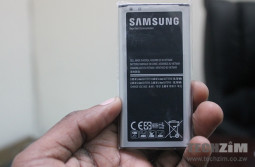One of the main reasons the Galaxy S25 series announcement was underwhelming was the battery situation. There was no upgrade at all in battery size, technology, or capacity.
The S25 and S25 Ultra have the same battery size and charging speeds as the S20 models. The S25+ has seen a slight capacity increase, but nothing major.
There were rumors that the S25 series would be getting:
Silicon-Carbon Batteries
Silicon-carbon batteries are an advanced type of lithium-ion battery (like the ones that have been in phones all this time).
What they did was replace some components in the old battery with new materials (graphite with silicon), which has produced impressive results.
Silicon can store significantly more lithium ions than graphite, leading to higher energy density – meaning longer battery life or smaller batteries with the same capacity.
We saw the OnePlus 13 launch with a massive 6,000mAh battery despite the physical battery size not increasing.
Alternatively, they could have installed a physically smaller battery with the same capacity (mAh) as the OP12 and used that extra space for something else.
The carbon component helps improve stability and reduces the swelling issues silicon typically faces. In other words, they managed to ensure the new batteries perform just as well as the old ones.
Additionally, silicon-carbon batteries can charge faster than traditional lithium-ion (Li-ion) batteries. So the benefits only stack up.
This is why it was disappointing to see the S25 series not adopt them. However, Samsung seems to be trying to emulate Apple by focusing on optimization rather than sheer hardware upgrades.
Battery tests show that the OnePlus 13, with its 6,000mAh battery, only outlasts the S25 Ultra, which has a 5,000mAh cell, by a small margin – about 45 to 60 minutes longer in endurance.
Why Samsung, Apple, and Google Haven’t Adopted Them
There are a few possible reasons why the biggest manufacturers haven’t hopped on the silicon-carbon train.
The first is cost. Silicon-carbon batteries are more expensive to produce than traditional lithium-ion batteries, and scaling up production for millions of devices requires significant investment.
See, the likes of OnePlus push respectable volumes, but they are peanuts compared to Samsung and Apple. While the big two make more per device, they would need to invest heavily in scaling silicon-carbon battery production.
Historically, silicon-carbon batteries faced high production costs and low yields, but advancements have been made.
Then there are longevity and safety concerns. While silicon allows higher energy density and faster charging, it also expands and contracts significantly during charge cycles, which can cause structural degradation over time.
Since silicon-carbon batteries are relatively new in consumer electronics, manufacturers may be waiting for more real-world data before integrating them into flagship devices.
This is even more understandable for Samsung. You’ll recall the disaster that was the Galaxy Note 7. It’s a miracle that Samsung survived that catastrophic battery scandal.
Adoption Around the Corner
That said, it appears that Samsung and Apple have gathered enough real-world data and invested in production facilities to adopt silicon-carbon batteries.
Rumors suggest that Samsung plans to equip the Galaxy S26 with silicon-carbon batteries, potentially increasing capacity to 7,000mAh.
Samsung is investing heavily in integrating silicon-carbon batteries into its flagship models for the upcoming year, addressing the material composition and expansion issues we discussed earlier.
It seems that Samsung is doing its usual thing – only being motivated by Apple, which is rumoured to be joining the fray.
Apple is reportedly confident that silicon-carbon battery issues have been ironed out and may introduce thinner batteries in the iPhone 17.
So, I guess that’s what will make the iPhone 17 Air possible, which means Samsung may have saved the new battery tech for the thinner S25 Edge coming out later this year.


For a moment there i thought this was going to be an article about Chikumbutso’s “revolutionary” inventions. 😬